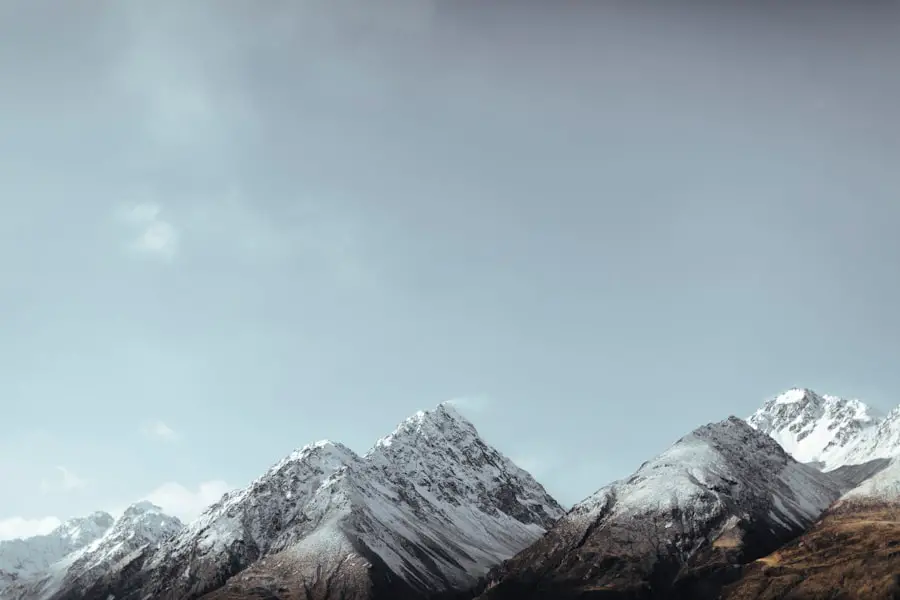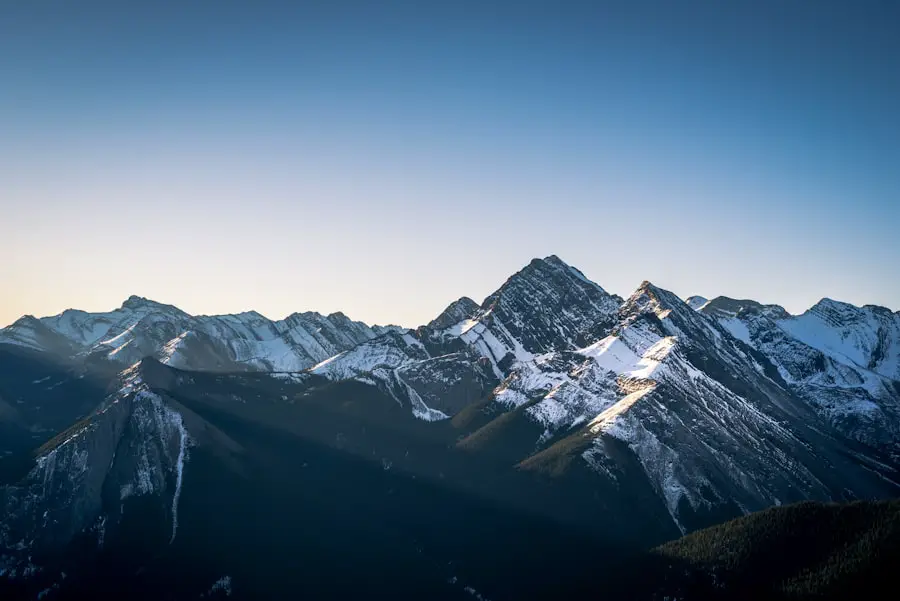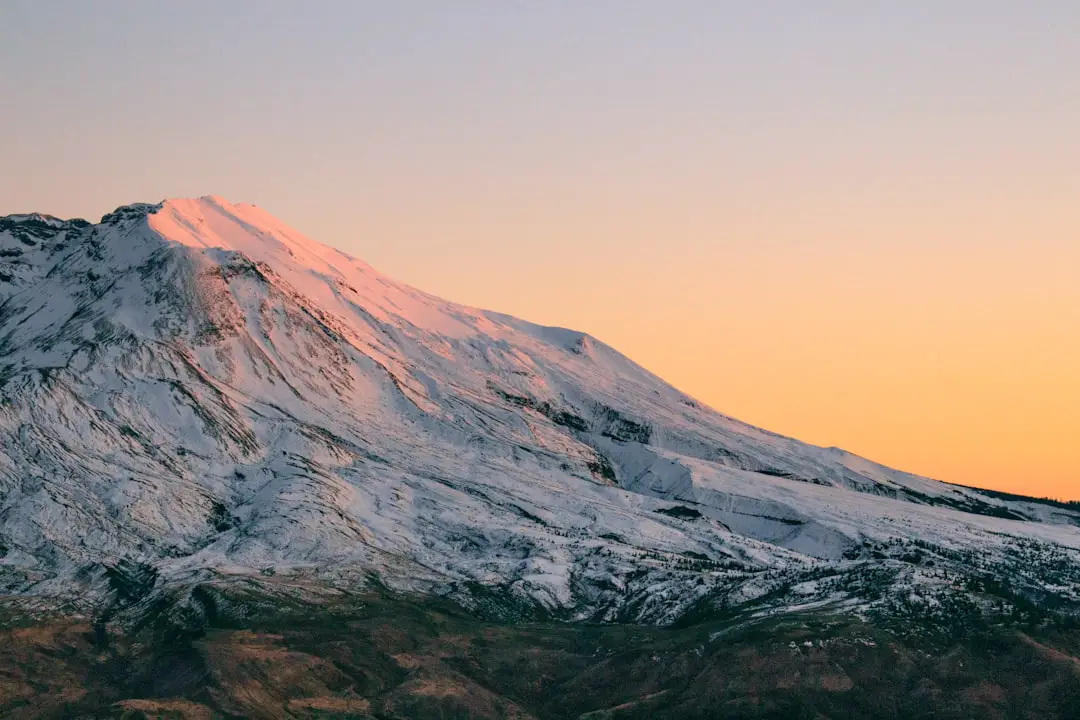The term “14er” refers to a mountain peak that rises at least 14,000 feet above sea level. In the United States, particularly in Colorado, there are 58 officially recognized 14ers, each offering unique challenges and breathtaking vistas. These towering giants attract hikers and climbers from all walks of life, drawn by the allure of standing atop a summit that pierces the sky.
The experience of conquering a 14er is not merely about reaching a physical destination; it embodies a personal journey of perseverance, determination, and connection with nature. Conquering a 14er is often seen as a rite of passage for outdoor enthusiasts. The challenge of ascending to such heights tests one’s physical limits and mental fortitude.
Each peak presents its own set of obstacles, from steep inclines and rocky terrain to unpredictable weather conditions. For many, the journey to the summit becomes a metaphor for overcoming life’s challenges. The sense of accomplishment that comes with reaching the top is profound, often leading to a deeper appreciation for the natural world and a desire to explore even more remote and rugged landscapes.
Key Takeaways
- 14ers are mountains with peaks that exceed 14,000 feet in elevation and conquering them is a popular challenge for outdoor enthusiasts.
- Physical and mental training are essential for preparing to conquer 14ers, including cardiovascular exercise, strength training, and mental resilience building.
- Essential gear for conquering 14ers includes proper footwear, clothing layers, navigation tools, hydration systems, and emergency supplies.
- When choosing the right 14er to conquer, consider difficulty levels and routes, and research the mountain’s terrain, weather conditions, and potential hazards.
- Safety tips for hiking 14ers include checking weather forecasts, staying hydrated, pacing yourself, and being aware of altitude sickness symptoms.
Preparing for the Challenge: Physical and Mental Training
Preparing to tackle a 14er requires a commitment to both physical and mental training. The physical demands of high-altitude hiking are significant; the lower oxygen levels can lead to fatigue and altitude sickness if one is not adequately prepared. A well-rounded training regimen should include cardiovascular exercises such as running, cycling, or swimming to build endurance.
Strength training is equally important, focusing on core stability and leg strength to navigate rocky trails and steep ascents. Incorporating hill workouts can simulate the conditions faced on a 14er, helping to acclimatize the body to the rigors of high-altitude hiking. Mental preparation is just as crucial as physical conditioning.
The psychological aspect of hiking a 14er can be daunting, especially when faced with challenging terrain or adverse weather conditions. Visualization techniques can be beneficial; imagining oneself successfully reaching the summit can bolster confidence and reduce anxiety. Additionally, practicing mindfulness and stress-reduction techniques can help maintain focus during the hike.
Understanding that setbacks may occur—whether due to fatigue or changing weather—can foster resilience and adaptability, essential traits for any aspiring 14er conqueror.
Essential Gear for Conquering 14ers

Equipping oneself with the right gear is vital for a successful ascent of a 14er. Proper footwear is perhaps the most critical component; sturdy, well-fitting hiking boots with good ankle support can prevent injuries on uneven terrain. Additionally, moisture-wicking socks can help keep feet dry and blister-free during long hikes.
Layering clothing is essential for managing temperature fluctuations; breathable base layers, insulating mid-layers, and waterproof outer layers ensure comfort in varying weather conditions. Beyond clothing and footwear, other essential gear includes trekking poles, which provide stability and reduce strain on the knees during descents. A well-stocked backpack should contain hydration systems or water bottles, high-energy snacks, a first-aid kit, and navigation tools such as maps or GPS devices. Sun protection is also crucial; sunglasses with UV protection and broad-spectrum sunscreen can shield against harmful rays at high altitudes where the sun’s intensity increases. A headlamp or flashlight is advisable for early morning starts or unexpected delays on the trail.
Choosing the Right 14er: Difficulty Levels and Routes
| 14er | Difficulty Level | Standard Route |
|---|---|---|
| Mount Elbert | Easy | North Mount Elbert Trail |
| Grays Peak | Easy | Grays Peak Trail |
| Torreys Peak | Easy | Torreys Peak Trail |
| Mount Bierstadt | Easy to Moderate | West Slopes Route |
| Quandary Peak | Moderate | East Ridge Route |
| Mount Evans | Moderate | West Ridge Route |
| Longs Peak | Difficult | Keyhole Route |
Selecting the appropriate 14er to climb is an important step in ensuring a successful experience. Each peak varies in difficulty based on factors such as elevation gain, technical challenges, and trail conditions. For beginners, peaks like Mount Bierstadt or Grays Peak offer relatively straightforward routes with well-marked trails and less technical climbing required.
These mountains provide an excellent introduction to high-altitude hiking without overwhelming novice climbers.
Peaks like Capitol Peak or Pyramid Peak present significant challenges with steep ascents and exposed ridges that demand careful navigation and climbing proficiency.
Researching each mountain’s specific route options is essential; some trails may be more accessible during certain seasons while others may require advanced planning due to snow or rockfall hazards. Understanding one’s skill level and comfort with risk will guide the decision-making process in choosing the right 14er.
Safety Tips for Hiking 14ers
Safety should always be a top priority when embarking on a 14er adventure. One of the most critical aspects of high-altitude hiking is acclimatization; spending time at higher elevations before attempting a summit can help mitigate the risk of altitude sickness. Symptoms such as headaches, nausea, and dizziness should not be ignored; if they occur, descending to a lower elevation is often necessary.
Staying hydrated is equally important; drinking plenty of water helps combat dehydration caused by altitude and physical exertion. Weather conditions can change rapidly in mountainous regions, making it essential to monitor forecasts before heading out. Starting early in the day can help avoid afternoon thunderstorms common in summer months.
Carrying a reliable weather radio or smartphone app can provide real-time updates on changing conditions. Additionally, informing someone about your hiking plans and estimated return time adds an extra layer of safety; in case of emergencies, having someone aware of your whereabouts can facilitate rescue efforts if needed.
The Importance of Leave No Trace Principles

As outdoor enthusiasts venture into pristine wilderness areas to conquer 14ers, it becomes imperative to adhere to Leave No Trace principles. These guidelines promote responsible outdoor ethics aimed at minimizing human impact on natural environments. One fundamental principle is to stay on designated trails; this helps preserve fragile ecosystems by preventing soil erosion and protecting native flora and fauna from trampling.
Proper waste disposal is another critical aspect of Leave No Trace practices. Hikers should carry out all trash, including food scraps and biodegradable materials, as wildlife can be negatively affected by human waste. In areas where restroom facilities are unavailable, using portable waste bags ensures that human waste does not contaminate water sources or disrupt local wildlife habitats.
By following these principles, hikers contribute to the preservation of these beautiful landscapes for future generations while enjoying their own outdoor experiences.
Conquering Your First 14er: Tips for Success
Successfully summiting your first 14er requires careful planning and execution.
Arriving at the trailhead before dawn not only provides ample time for the ascent but also offers an opportunity to witness stunning sunrises over the mountains.
Pacing oneself during the hike is crucial; it’s easy to become overly ambitious in the early stages but maintaining a steady rhythm will conserve energy for the final push to the summit. Frequent breaks for hydration and nourishment are essential; high-energy snacks like trail mix or energy bars can provide necessary fuel without weighing down your pack. Additionally, embracing a positive mindset can enhance the experience; celebrating small milestones along the way fosters motivation and camaraderie among fellow hikers.
The Ultimate Reward: Enjoying the Views from the Summit
Reaching the summit of a 14er is often described as one of life’s most exhilarating experiences. The panoramic views from such heights are nothing short of breathtaking; vast expanses of rugged terrain stretch out in every direction, showcasing nature’s grandeur in its purest form. The sense of accomplishment that accompanies standing atop a peak that few have reached adds an emotional depth to the experience—an affirmation of one’s hard work and dedication.
Moreover, summiting a 14er often fosters a sense of community among hikers who share this common goal. Many climbers take time at the top to connect with others who have made the journey, exchanging stories and tips while soaking in the awe-inspiring scenery. This shared experience creates lasting memories that extend beyond just reaching a physical destination; it cultivates friendships forged through mutual respect for nature’s beauty and challenges.
The summit becomes not just a point on a map but a celebration of human spirit and resilience against nature’s formidable backdrop.
If you’re planning a hiking trip to conquer a 14er, you’ll want to make sure you have the right gear, including a reliable power bank for your electronic devices. Check out this article on the best power bank for international travel to ensure you stay connected while on the trail. Additionally, a solar charger can be a great option for backpacking trips where access to electricity may be limited. Learn more about the best solar charger for backpacking to keep your devices charged while enjoying the great outdoors. And don’t forget to pack efficiently with some packing cubes for your upcoming getaway. Check out this article on the 5 must-have packing cubes for your spring 2025 getaway for some helpful tips on organizing your belongings.
FAQs
What is a 14er in hiking?
A 14er is a mountain peak with an elevation of at least 14,000 feet above sea level. In the United States, the term “14er” is commonly used to refer to peaks in Colorado that meet this elevation requirement.
How many 14ers are there in Colorado?
Colorado is home to 58 mountain peaks that are classified as 14ers. These peaks attract hikers and mountaineers from around the world due to their challenging terrain and stunning views.
What are some popular 14ers in Colorado?
Some of the most popular 14ers in Colorado include Mount Elbert, Mount Massive, Pikes Peak, and Longs Peak. These peaks offer a variety of hiking and climbing routes for outdoor enthusiasts.
What should hikers consider before attempting a 14er?
Hikers should consider factors such as altitude sickness, rapidly changing weather conditions, and challenging terrain before attempting a 14er. It’s important to be well-prepared, physically fit, and equipped with the proper gear.
Are there any safety tips for hiking a 14er?
Some safety tips for hiking a 14er include starting early to avoid afternoon thunderstorms, staying hydrated, dressing in layers, and being aware of signs of altitude sickness. It’s also important to let someone know your hiking plans and to stay on designated trails.
